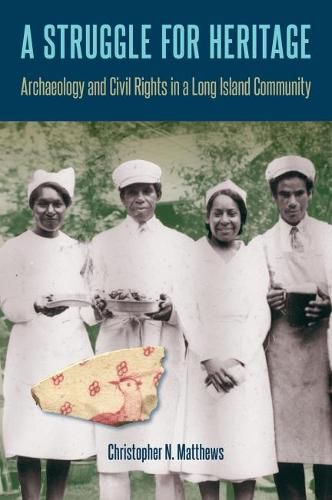Readings Newsletter
Become a Readings Member to make your shopping experience even easier.
Sign in or sign up for free!
You’re not far away from qualifying for FREE standard shipping within Australia
You’ve qualified for FREE standard shipping within Australia
The cart is loading…






This title is printed to order. This book may have been self-published. If so, we cannot guarantee the quality of the content. In the main most books will have gone through the editing process however some may not. We therefore suggest that you be aware of this before ordering this book. If in doubt check either the author or publisher’s details as we are unable to accept any returns unless they are faulty. Please contact us if you have any questions.
Based on ten years of collaborative, community-based research, this book examines race and racism in a mixed-heritage Native American and African American community on Long Island’s north shore. Through excavations of the Silas Tobias and Jacob and Hannah Hart houses in the village of Setauket, Christopher Matthews explores how the families who lived here struggled to survive and preserve their culture despite consistent efforts to marginalize and displace them over the course of more than 200 years. He discusses these forgotten people and the artifacts of their daily lives within the larger context of race, labor, and industrialization from the early nineteenth to the mid-twentieth century.
A Struggle for Heritage draws on extensive archaeological, archival, and oral historical research and sets a remarkable standard for projects that engage a descendant community left out of the dominant narrative. Matthews demonstrates how archaeology can be an activist voice for a vulnerable population’s civil rights as he brings attention to the continuous, gradual, and effective economic assault on people of color living in a traditional neighborhood amid gentrification. Providing examples of multiple approaches to documenting hidden histories and silenced pasts, this study is a model for public and professional efforts to include and support the preservation of historic communities of color.
$9.00 standard shipping within Australia
FREE standard shipping within Australia for orders over $100.00
Express & International shipping calculated at checkout
This title is printed to order. This book may have been self-published. If so, we cannot guarantee the quality of the content. In the main most books will have gone through the editing process however some may not. We therefore suggest that you be aware of this before ordering this book. If in doubt check either the author or publisher’s details as we are unable to accept any returns unless they are faulty. Please contact us if you have any questions.
Based on ten years of collaborative, community-based research, this book examines race and racism in a mixed-heritage Native American and African American community on Long Island’s north shore. Through excavations of the Silas Tobias and Jacob and Hannah Hart houses in the village of Setauket, Christopher Matthews explores how the families who lived here struggled to survive and preserve their culture despite consistent efforts to marginalize and displace them over the course of more than 200 years. He discusses these forgotten people and the artifacts of their daily lives within the larger context of race, labor, and industrialization from the early nineteenth to the mid-twentieth century.
A Struggle for Heritage draws on extensive archaeological, archival, and oral historical research and sets a remarkable standard for projects that engage a descendant community left out of the dominant narrative. Matthews demonstrates how archaeology can be an activist voice for a vulnerable population’s civil rights as he brings attention to the continuous, gradual, and effective economic assault on people of color living in a traditional neighborhood amid gentrification. Providing examples of multiple approaches to documenting hidden histories and silenced pasts, this study is a model for public and professional efforts to include and support the preservation of historic communities of color.